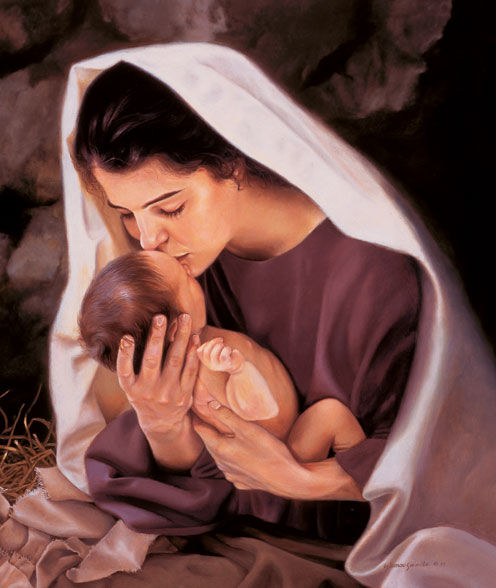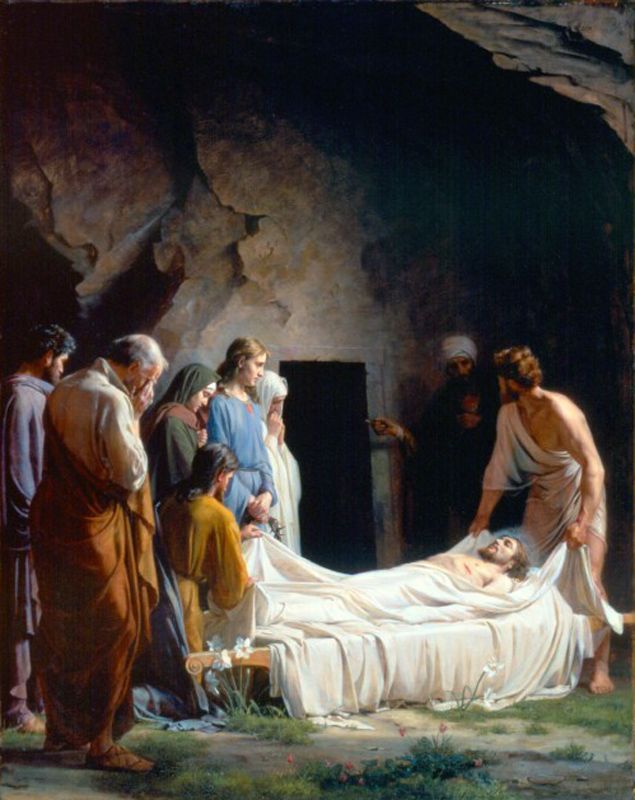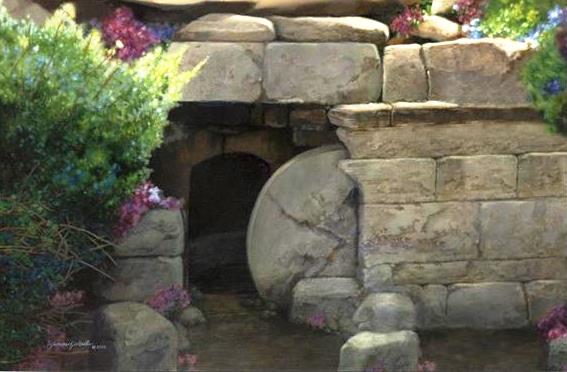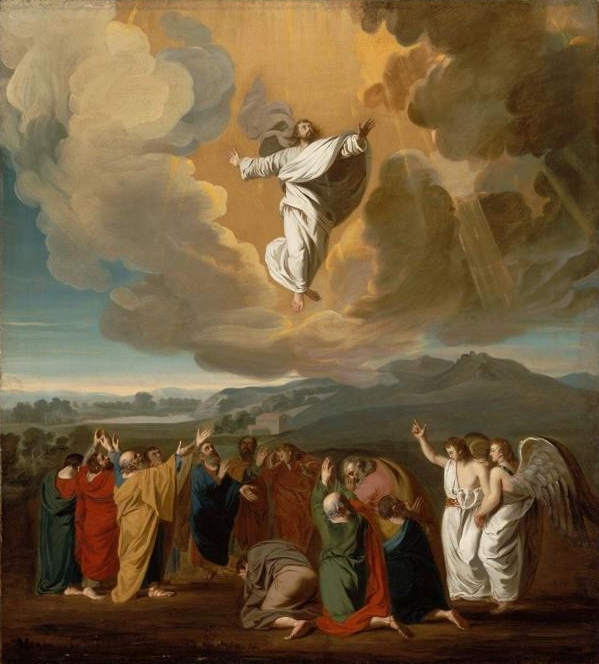Dear Brothers and Sisters in Christ,
 Near the end of his Gospel, the apostle John made these intriguing comments: “Jesus performed many other signs in the presence of his disciples, which are not recorded in this book…. If every one of them were written down, I suppose that even the whole world would not have room for the books that would be written” (John 20:30; 21:25). Given these comments, and noting differences among the four Gospels, we conclude that these accounts were not written to be exhaustive records of Jesus’ life. John says his purpose in writing was that “you may believe that Jesus is the Messiah, the Son of God, and that by believing you may have life in his name” (John 20:31). The focus of the Gospels is to tell the good news about Jesus and the salvation that is ours in him.
Near the end of his Gospel, the apostle John made these intriguing comments: “Jesus performed many other signs in the presence of his disciples, which are not recorded in this book…. If every one of them were written down, I suppose that even the whole world would not have room for the books that would be written” (John 20:30; 21:25). Given these comments, and noting differences among the four Gospels, we conclude that these accounts were not written to be exhaustive records of Jesus’ life. John says his purpose in writing was that “you may believe that Jesus is the Messiah, the Son of God, and that by believing you may have life in his name” (John 20:31). The focus of the Gospels is to tell the good news about Jesus and the salvation that is ours in him.
Though in verse 31 John attributes salvation (life) to the name of Jesus, it’s common for Christians to speak of being saved by Jesus’ death. Though this short-hand statement is correct as far as it goes, relating salvation exclusively to Jesus’ death can stunt our understanding of the fullness of who Jesus is and all he has done to save us. The events of Holy Week remind us that Jesus’ death, though vital, is part of a larger story that includes our Lord’s incarnation, death, resurrection and ascension. All these are intrinsic, inseparable milestones of Jesus’ one redemptive work—the work that gives us life in his name. During Holy Week, and throughout the year, let’s look to Jesus—the complete salvation package.
Incarnation

Jesus’ birth was not the ordinary birth of an ordinary man. Unique in every way, it was the beginning of the Incarnation of God himself. In Jesus’ birth, God came among us as a human in the way all humans since Adam have been born. Remaining what he was, the eternal Son of God took on a whole human life, from beginning to end—birth to death. In his one Person, Jesus is both fully divine and fully human. In this stunning statement we find an eternity’s worth of significance that merits an eternity of appreciation.
Through the Incarnation, the eternal Son of God stepped out of eternity and into his creation of space and time to become a man of flesh and blood: “The Word became flesh and made his dwelling among us. We have seen his glory, the glory of the one and only Son, who came from the Father, full of grace and truth” (John 1:14).
Jesus was indeed a genuine full-fledged man, but at the same time he was fully God—one in being with the Father and Spirit. The birth of Jesus fulfills many prophecies and is the promise of our salvation.
The Incarnation did not end with Jesus’ birth—it continued throughout his earthly life, and continues today in his glorified human life. The Son of God incarnate (in the flesh), remains one in being with the Father and Spirit—the fullness of the whole God is present and active in Jesus—making the human life of Jesus uniquely significant. As Romans 8:3-4 says, “For what the law was powerless to do because it was weakened by the flesh, God did by sending his own Son in the likeness of sinful flesh to be a sin offering. And so he condemned sin in the flesh, in order that the righteous requirement of the law might be fully met in us, who do not live according to the flesh but according to the Spirit.” Paul further explains that we are “saved through his life” (Romans 5:11).
The life and work of Jesus are inseparable—all part of the Incarnation. The God-man Jesus is the perfect high priest and mediator between God and man because he partook of the nature of man and reclaimed humanity by living a sinless life. His sinless life helps us understand how he can maintain a relationship with both God and man. While we typically celebrate his birth at Christmas, the events in Jesus’ whole life are always a part of our total worship, including during Holy Week. His life reveals the relational nature of our salvation. Jesus brought together, in his own person, God and humanity in perfect relationship.
Death

For some, the short-hand declaration, we are saved by Jesus’ death, carries with it the unfortunate misconception that Jesus death was a sacrifice that conditioned God into being gracious. I pray that we all see the fallacy of this notion.
T.F. Torrance writes that with a proper understanding of the Old Testament sacrifices, we will see Jesus’ death not as a pagan offering for the sake of forgiveness, but as a powerful witness to the will of a merciful God (Atonement: The Person and Work of Christ, pages 38-39). Pagan systems of sacrifice were based on retribution, but Israel’s was based on reconciliation. Under Israel’s system, rather than sacrifices and offerings being given to earn forgiveness, God provided them to cover for and remove the people’s sin so that they would be reconciled to God.
Israel’s sacrificial system was designed to make manifest and to witness to God’s love and mercy, pointing to the purpose of Jesus’ death, which is reconciliation with the Father. Jesus death also defeated Satan and the power of death: “Since the children have flesh and blood, he too shared in their humanity so that by his death he might break the power of him who holds the power of death—that is, the devil—and free those who all their lives were held in slavery by their fear of death” (Hebrews 2:14-15). Paul adds that Jesus “must reign until he has put all his enemies under his feet. The last enemy to be destroyed is death” (1 Corinthians 15:25-26). Jesus’ death is the atoning part of our salvation.
Resurrection

On Easter Sunday, we celebrate Jesus’ resurrection, which fulfills many Old Testament prophecies. The author of Hebrews tells us that Isaac being saved from death is a picture of resurrection (Hebrews 11:18-19). The book of Jonah tells us that Jonah was in the stomach of the sea monster “three days and three nights” (Jonah 1:17). Jesus related that event to his death, burial and resurrection (Matthew 12:39-40; Matthew 16:4, 21; John 2:18-22).
We celebrate Jesus’ resurrection with great joy because it reminds us that death is not permanent. It’s a temporary step toward our future—eternal life in communion with God. At Easter we celebrate Jesus’ victory over death and the new life we will have in him. We look forward to the time spoken of in Revelation 21:4: “He will wipe every tear from their eyes. There will be no more death or mourning or crying or pain, for the old order of things has passed away.” The resurrection is the hope of our salvation.
Ascension

Jesus’ birth led to his life and his life led to his death. But we cannot divorce his death from his resurrection and we cannot separate his resurrection from his ascension. Jesus didn’t just come out of the grave and live as a human being. Now a glorified human, Jesus ascended to the Father, and it was not until that great event occurred that he finished the work he started.
In the introduction to Torrance’s book Atonement, Robert Walker wrote this: “The ascension is Jesus’ taking of our humanity in his person into the presence of God into the union and communion of the love of the Trinity.” C.S. Lewis put it this way: “In the Christian story God descends to re-ascend.” The glorious good news is that in ascending, Jesus took us up with him: “God raised us up with Christ and seated us with him in the heavenly realms in Christ Jesus, in order that in the coming ages he might show the incomparable riches of his grace, expressed in his kindness to us in Christ Jesus” (Ephesians 2:6-7).
Incarnation, death, resurrection and ascension—all vital parts of our salvation and thus our worship during Holy Week. These milestones point to all Jesus has accomplished for us through his whole life and whole work. Throughout the year, let’s take in more and more of who Jesus is and all of what he has done for us. He is the complete salvation package.
Holy Week blessings to you and yours,
Joseph Tkach



Joe, thanks for the precious summation of the Christ events. It is so true and so you. Happy Holy Week. to you & Tammy
Love In Him JR & HBR
In an article at http://brianzahnd.com/2014/04/dying-sins-work/, pastor/theologian Brian Zahnd makes a similar point about the atoning work of the Triune God in discussing what Scripture means (and doesn’t mean!) in saying that “Jesus died for our sins.”
HE IS RISEN!!!
The peace of our Lord be with you.
In Him,
The Lange Family
I LOVE THIS ARTICLE, so inspiring as it details the truth!